Kia’s new halo bespoke electric vehicle has landed in Australia – but all 600 allocated examples have been sold out this year. So is the Kia EV6 still worth the hype to be on the one- to two-year long waiting list amid a highly contested EV price segment?
The EV6 comes in three variants, with our GT-Line all-wheel drive (AWD) test unit currently being the top-spec, before an even more powerful GT model arrives in late 2022 or early 2023.
The EV6 GT-Line AWD is priced from $82,990 before on-road costs, with our example painted in ‘Snowflake White Pearl’ for $525 more and a supplied Kia single phase Type 2 to Type 2 cable costing $492.91.
zecar rating
Good points
- Planted Australian-tuned handling and ride
- Turns heads
- Ultra-rapid charging capability
Could be better
- Brake lights deactivate once stopped using one-pedal driving
- $8000 more than the GT-Line RWD
- Interior doesn’t feel its price
EDITOR’S NOTE: The test vehicle was provided by Kia Australia for a seven-day independent evaluation.
Design
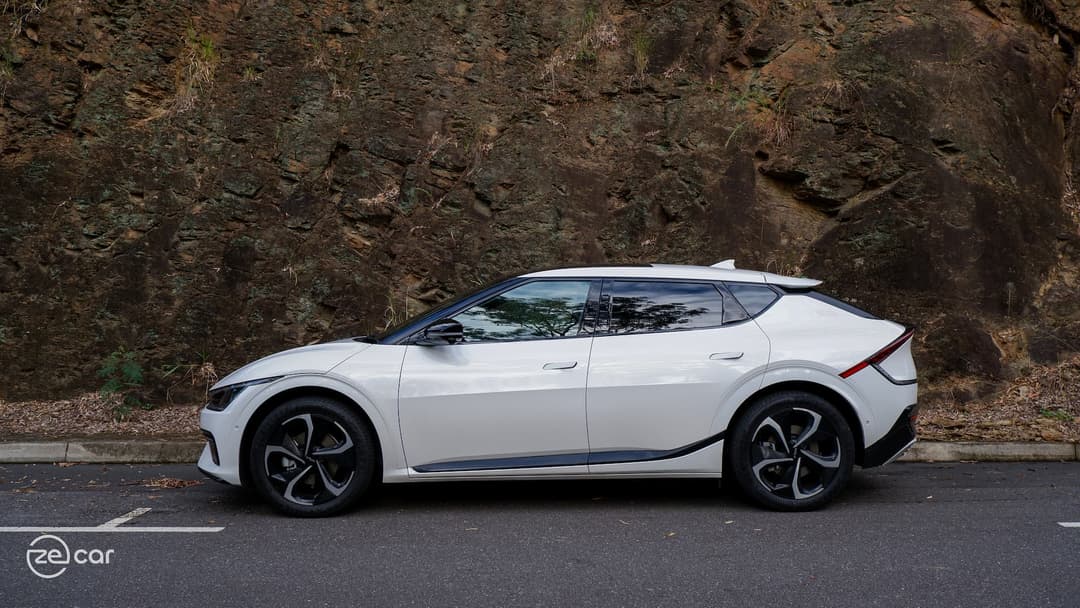
While the South Korean brand markets the EV6 as a large SUV, it looks more like a long crossover sportswagon with dimensions including a 4695mm length, 1890mm width and only 160mm of ground clearance – which is about 20mm lower than its Sportage medium SUV counterpart.
The exterior gives an overall sleek, sporty impression with its large eyebrow-like ‘Digital Tiger Face’ LED daytime running lights, imposing curved full-width LED taillights that doubles as a spoiler, slick gloss black painted A-pillar and mirror caps, and 20-inch dark machined aerodynamic alloys.
The fact that this Kia made many people turn their heads or even stop to have a quick conversation in my week of testing is a testament to how far the brand has come.
But, I did find a larger panel gap on the left side of the bonnet on our tester. Given this is an early unit, it’s not too out of the ordinary.
All EV6’s feature flush door handles to improve aerodynamic efficiency, but GT-Line models automatically pop-out when the vehicle is unlocked using the proximity key. It's an important accessibility feature that might be make or break for some to avoid the base Air, although I found some new passengers were still confused on how to grab it as its slim rectangular shape is a little awkward to pull.
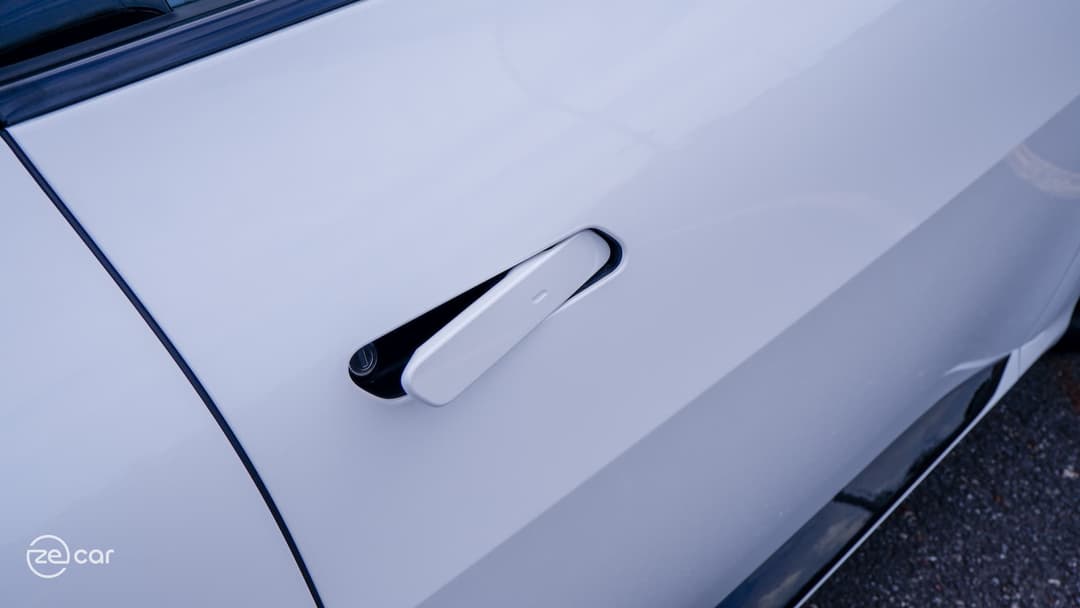
The sporty theme carries onto the inside where dual curved displays, an aeroplane-style centre console divider, unique GT-Line grey textured patterns on the dashboard and centre armrest, black headliner, and black suede seats with white vegan leather accents and stitching gives drivers and passengers an enclosed feeling.
On GT-Line variants, 64-colour ambient lighting is strewn across the dashboard, centre console and felt-lined door pockets to elevate the black interior at night and envelop the driver, but isn’t too ostentatious. During the day, the tilt and opening sunroof does give the dark interior scheme some welcome natural light – but is weirdly only standard in this GT-Line AWD guise.
However, while there’s a superficially appealing two-tone white and black interior, harder plastics can be found lower down the door panels and front seatbacks. Kia says sections of the dashboard and centre console are recycled from 107 plastic bottles.
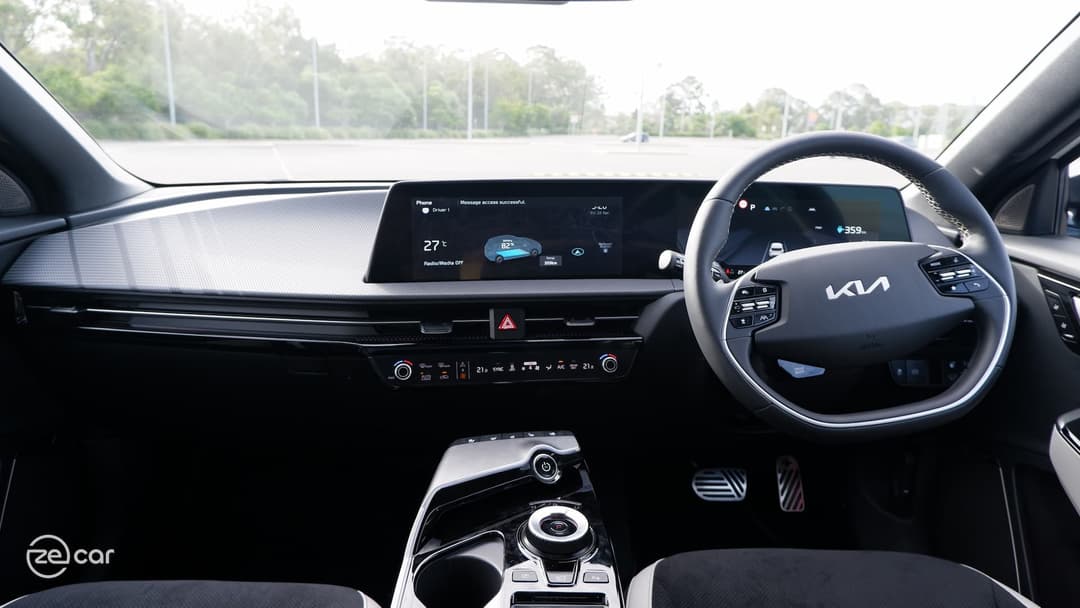
For a halo model that costs around $89K on the road, I’d expect some softer materials beyond the textured dashboard and leatherette padding on upper sides of the door.
Similarly, the EV6 uses hard gloss black surfaces on key touchpoints in the cabin, including the floating centre console, steering wheel buttons, wiper and indicator stalks, and around the door window switches.
Specifically, while there’s a padded armrest on the door, I wish it could extend further and cover the piano black area for the door grab as it tends to collect smudges quickly and feels too hard – being the the key contact point for entering and exiting the vehicle.
Practicality and comfort
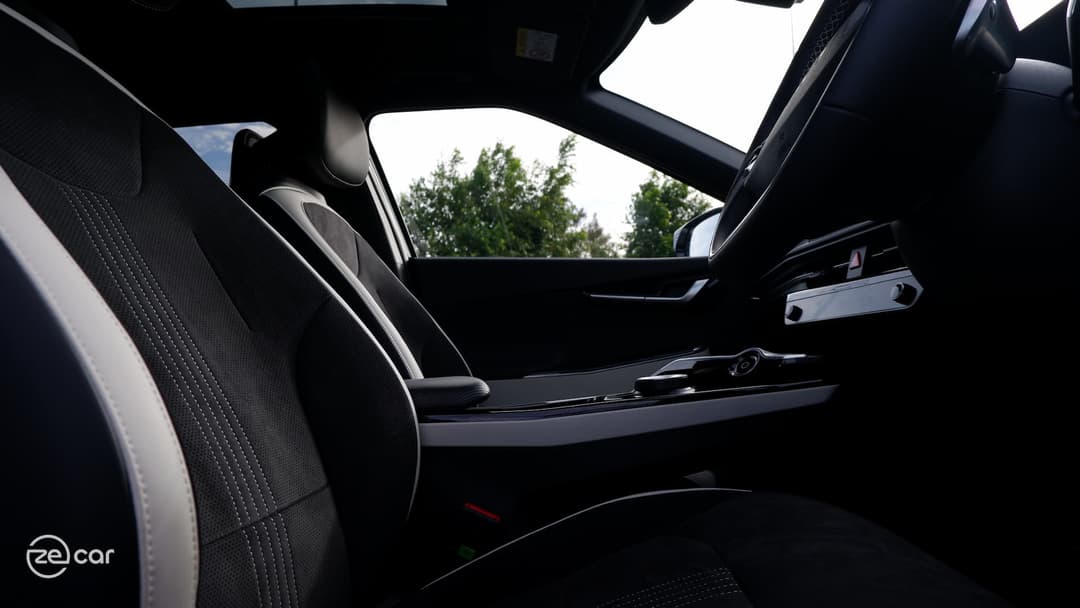
The Kia EV6 GT-Line boasts a 480-litre boot capacity, expanding to 1260-litres when the 60/40 split folding rear seats are folded down. There's no middle ski opening flap unlike overseas variants.
The boot has a small underfloor space for storing charging cables, the included vehicle-to-load (V2L) adapter and tyre inflation kit (in lieu of any spare tyre as with all EVs). There’s also a 12-volt power socket, latches to conveniently fold the rear seats from the back, LED lamps and a retractable cargo cover. While the loading height into the boot is reasonably flat, the sloping coupe-like roofline of the EV6 makes storing taller items a bit trickier.
Disappointingly, the EV6’s boot doesn’t feature any bag hooks to secure items. Thankfully, though, GT-Line models include a cargo net so I’ve been storing my backpack underneath to prevent it from flying around while driving.
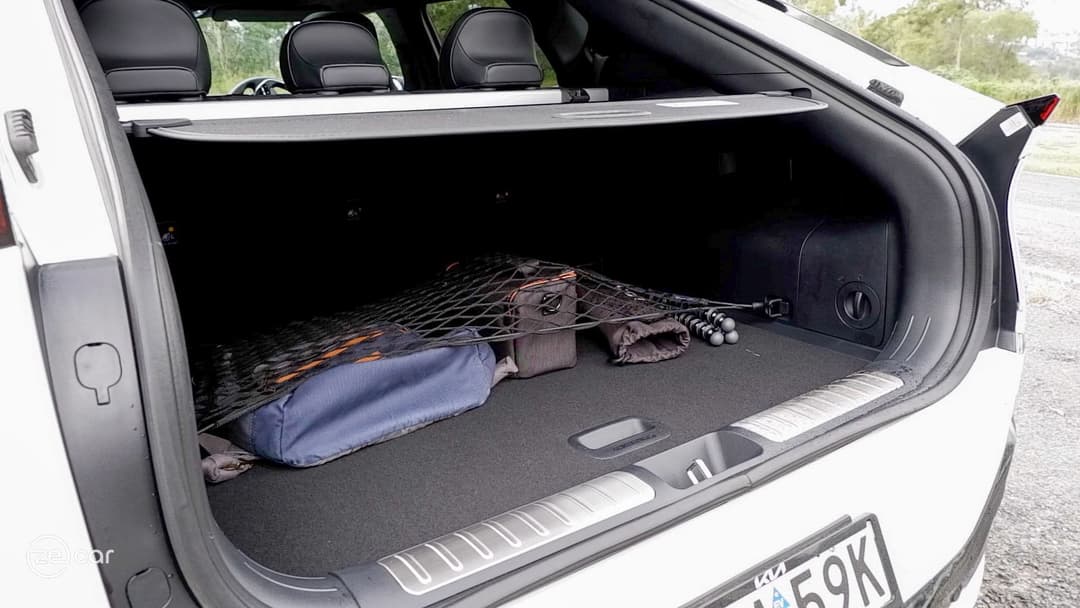
The boot is accessed via the electric tailgate on GT-Line variants, which can be opened by a tailgate button press, via the keyfob or at the driver’s seat. When the vehicle is locked, the ‘smart tailgate’ function will automatically open the tailgate when the proximity key is closely behind the EV6 for a few seconds. But, I wish it could auto open when the car is unlocked as well since the vehicle tends to unlock automatically when I brush past the front doors, which then defeats the ‘handsfree’ concept.
Surprisingly, the ‘Remote Smart Parking Assist’ function was useful. Given the EV6’s ungainly length and width, using the key fob to move the car forwards and backwards so I could access the boot or open the door more easily was convenient – and a neat trick to show off to everyone in the carpark.
It can also automatically park itself by just standing outside and pressing the key, but I never used it as trying the function sitting in the car wasn’t confidence inspiring. The electric sportback tends to not detect a parking space at all or park too close to the line when it does work.
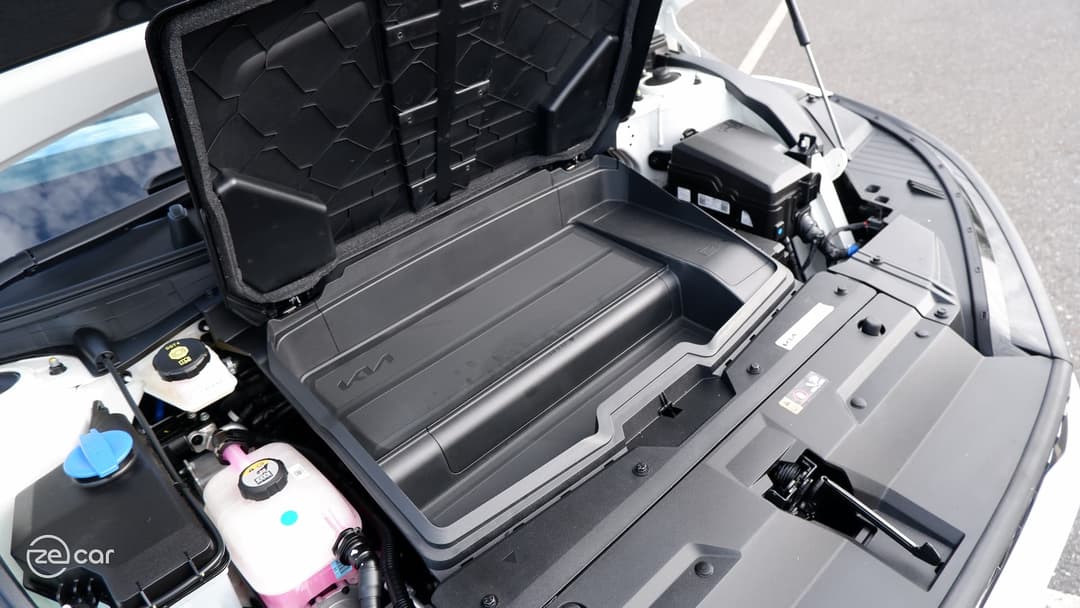
The Kia EV6 GT-Line AWD also has a 20-litre frunk, which is more than half the size of rear-wheel drive (RWD) powertrains due to the added front electric motor. Despite the small capacity, I still found it useful for storing charging cables, rubbish and malleable items that can fit under the engine-like ‘EV’ frunk cover, and there’s also a handy LED lamp.
As the first Kia riding on the Hyundai Motor Group’s bespoke Electric Global Modular (E-GMP) platform, it has a 2900mm long wheelbase yielding the same interior room as a large SUV like the Hyundai Palisade (or Kia Telluride if you’re in the States).
The rear row seats are palatial with ample legroom – even when set to the furthest back position – along with good head and feet space. And since the EV6 is quite wide at 1890mm, there’s enough space to fit three adults abreast comfortably with a flat-floor due to the ground-up EV architecture.
Amenities for rear passengers also include well-placed air vents on the B-pillars, two USB-C charging ports beside the front seats, an interior V2L domestic plug underneath, a fold-down armrest with two cup holders, good sized carpeted door bins with ambient lighting and seatback pockets – albeit in a stiff and hard plastic finish.
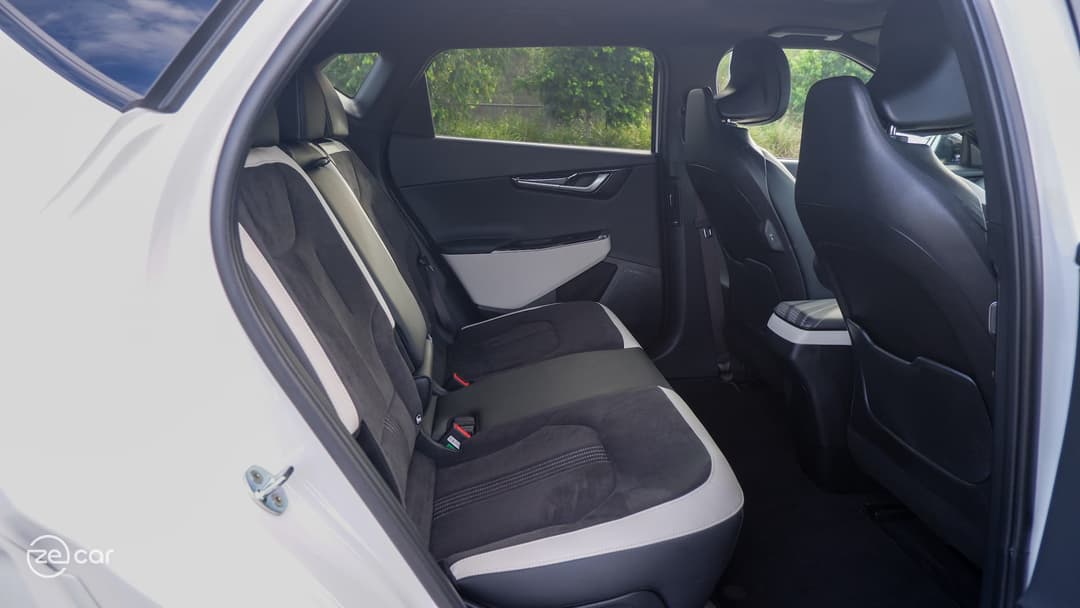
But for families, it lacks built-in rear window sunshades (only a tinted privacy glass) unlike its Hyundai Ioniq 5 sibling. Due to the sporty-themed interior, black headliner and lack of a panoramic-style glass roof, some may feel that it’s a little darker and smaller than what it really is.
The rear seats are also clad in a suede/vegan leather mix with two ISOFIX child seat anchor points and can also be reclined, but you’ll need to move the cargo cover to a forward detent which compromises on boot space and is a hassle to adjust.
Only the front seats have three-stage heating and ventilation functionality, while the driver is treated to a heated steering wheel, too. They can be toggled at the end of the floating centre console and, pleasantly, are tangible hard buttons unlike some overseas versions.
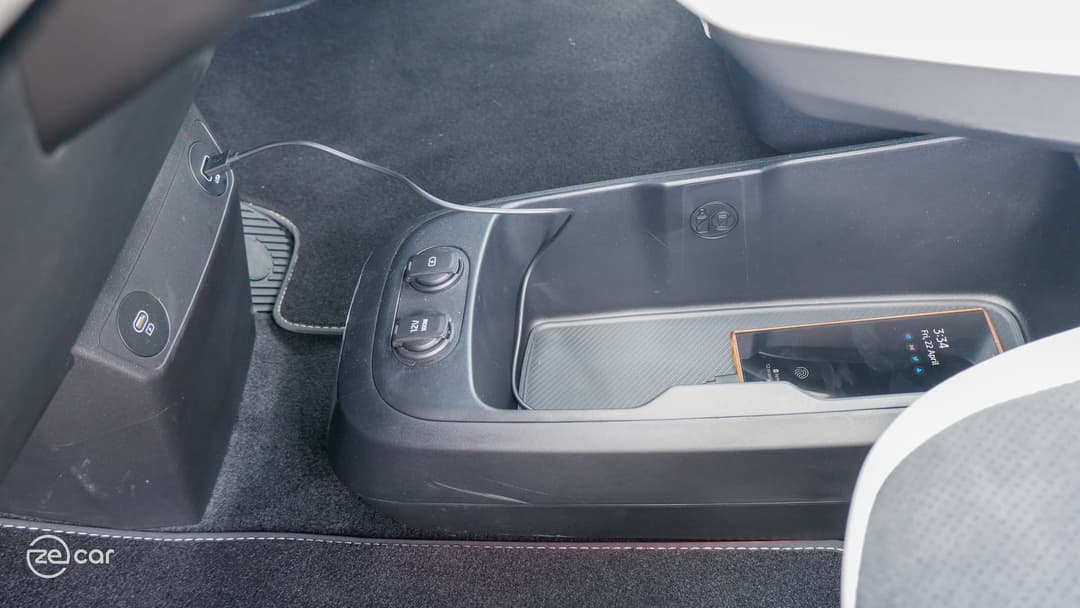
Overall, the seats are fairly comfortable and supportive but can feel a little firm on longer commutes. Exclusive to GT-Line trims, the relaxation mode is essentially another memory setting for the front two seats to lay down and I found it useful to look up at the standard sunroof.
The two-spoke wheel has a slight flat bottom, the artificial leather is well bolstered and the steering wheel buttons are easy to learn and use.
Additionally, the floating centre console has two cup holders and a small slot to fit the proximity key, a large centre console storage cubby, and a cavernous open tray underneath with two hooks that can store handbags. However, the tray is hard to access and there’s no light illuminating it at night; I only used it for storing my phone when connected to the USB-A port for smartphone mirroring.
I also found the centre armrest a bit firm for resting my elbow. The glove box is quite deep and the carpeted door pockets can accommodate a large bottle.
Technology
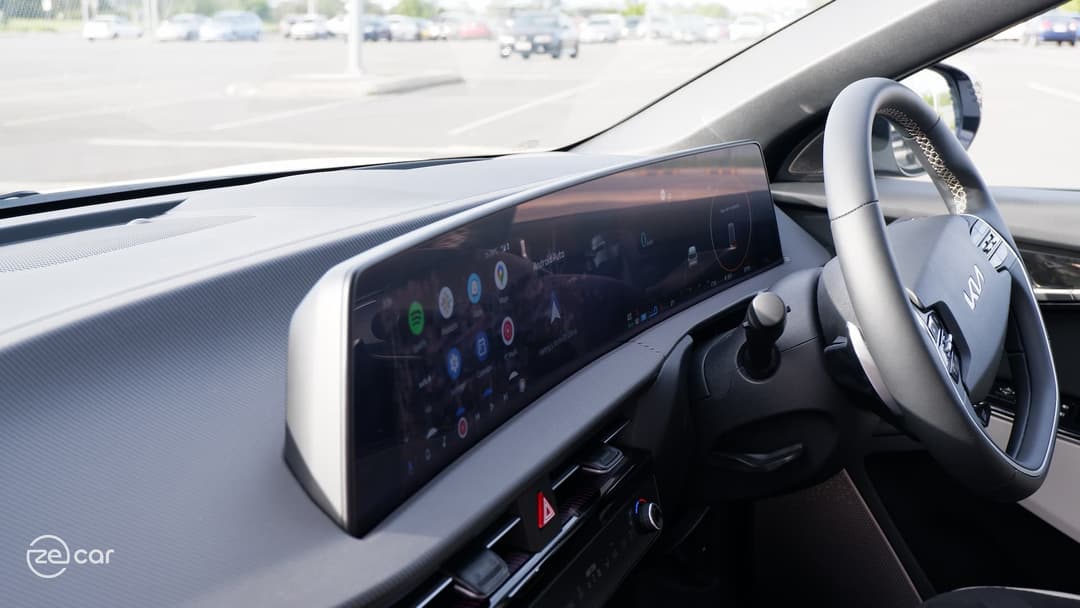
The interior of all Kia EV6’s are dominated by two 12.3-inch infotainment and instrument cluster displays joined on a single curved panel.
The infotainment touchscreen is based on the Hyundai Motor Group’s own software, with built-in maps, Bluetooth, and AM/FM/DAB+ radio. The overall operating system performs well, the display is high resolution and matte-coated to collect less fingerprint smudges, and has a modern user interface with a purple/blue theme, dark mode set as the default (which can be switched to light mode for better legibility), and a blue light filter to prevent tiredness at night.
But, I found adjusting settings requires a learning curve with multiple deep menus and sub-menus, and it’s sometimes hard to go back to the previous screen and remember what I was searching for. For example, adjusting ambient lighting requires at least five touch presses (settings app > vehicle > scroll down to lights > ambient light > colour).
Similarly, electric car-specific settings are in a separate ‘EV’ app to set charge limits, climate preconditioning schedule and more – which also contains layers of different pages and sub-menus.
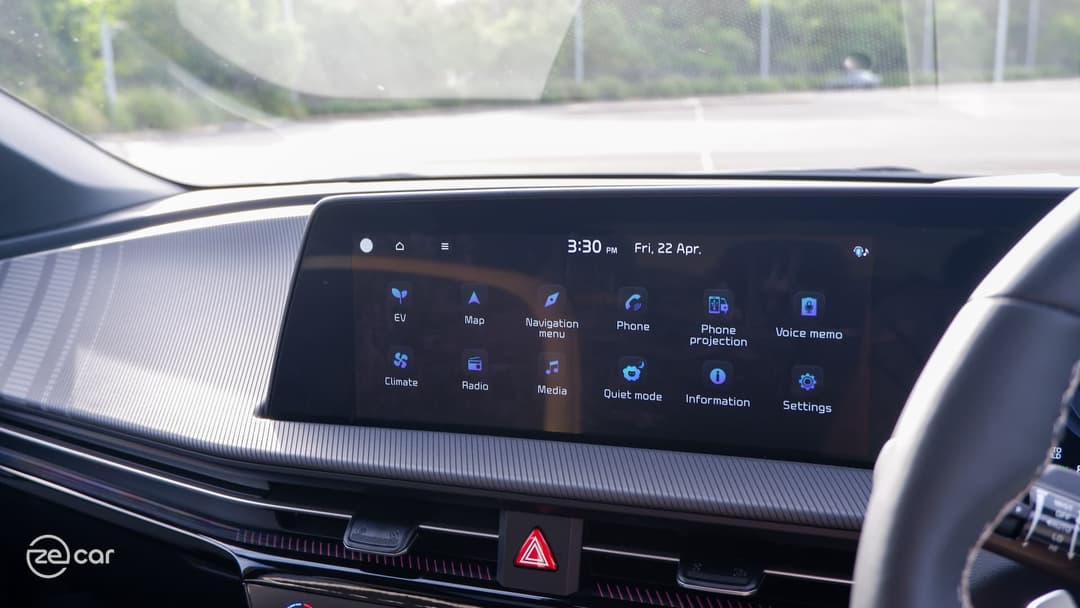
Thankfully, the EV6’s infotainment system has Apple CarPlay and Android Auto, albeit both wired-only. The phone must also be plugged-in to the only outdated USB-A port in the cabin near the floor and stored in the bottom tray (if your cable is long enough).
While I prefer wired smartphone projection as it’s more reliable, using a USB-C port in a more accessible location would have been better for Kia’s first bespoke EV and new halo model.
As a result, the nifty 15-watt fast Qi wireless charger with cooling fans wasn’t used as much. The Korean conglomerate is said to be progressing discussions with one of the two tech giants over default maps, which is currently preventing wireless projection with systems containing built-in navigation.
Disappointingly, while iPhone users can enjoy the EV6’s full widescreen using Apple CarPlay, Android Auto does not utilise the entire screen space. Instead, it takes up three-quarters with the remaining portion showing a bleak placeholder as the default.
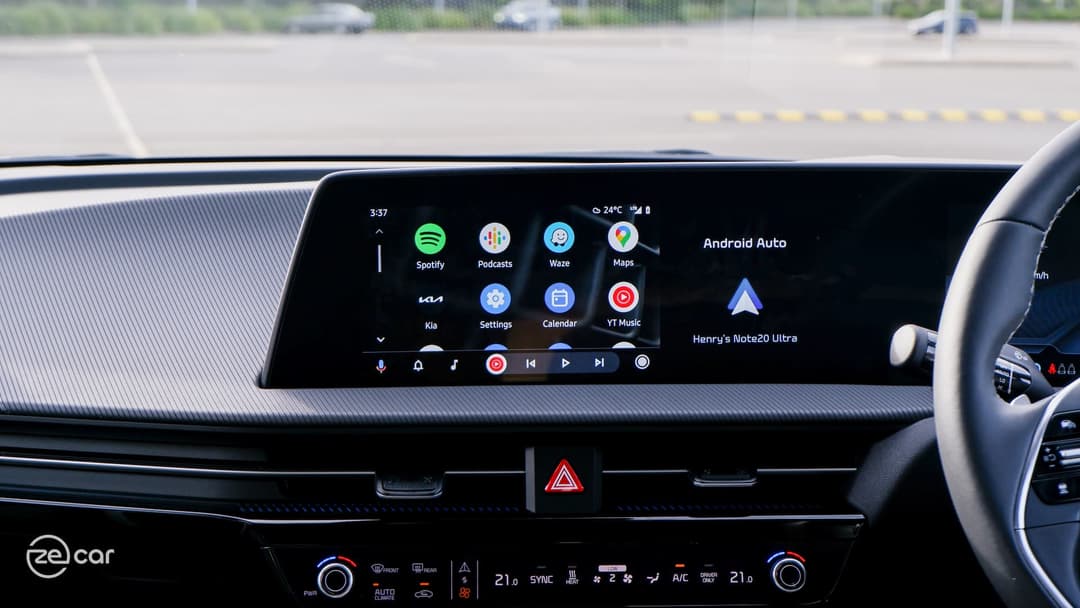
To offset this, I toggled split-screen functionality which fills the space with widgets like the remaining battery percentage, radio, built-in navigation or digital clock from the built-in software. I found the former handy (even though it’s always shown in the driver’s cluster), but once you start navigation or play audio in Android Auto, you can’t ‘double up’ and display the built-in maps or music player in the split-screen respectively.
Fortunately, it seems the woes of Android Auto not filling widescreen formats is being addressed overseas in line with Google’s overhaul coming soon.
The EV6 is also the second Kia to debut its dual-function touch sensitive panel that switches between climate control and infotainment shortcut buttons with a press. While it is clever in theory to allow for a more minimalist design, the infotainment panel isn't really useful besides turning off the radio and hopping into smartphone projection, so I mostly left it on HVAC controls.
When I do need the infotainment strip, pressing to change it then switching it back to HVAC is just a step too inconvenient. The touch targets are also a bit small and fiddly while driving, ditto the two dial knobs.
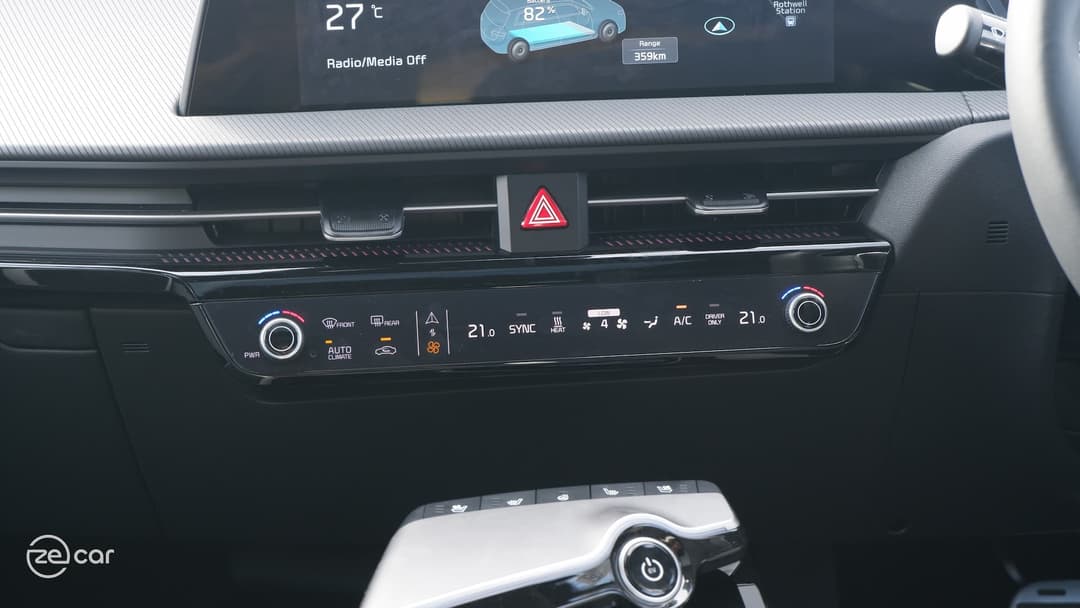
Strangely, if you want to turn off the climate control (i.e. to conserve energy consumption), it requires diving into a dedicated ‘climate’ app within the infotainment instead as there’s no way to completely turn it off via the HVAC panel.
Ahead of the driver is a fully digital instrument cluster showing essential information as well as the regenerative braking setting, power and regen braking on a carpet-like spectrum, battery percentage, blind spot view cameras, and more.
While it is clear and legible, it lacks customisability with switching drive modes only changing the colour of fonts and graphics, plus rudimentary information pages like adaptive cruise control, an AWD drivetrain graphic and navigation arrows when you’re using the built-in maps.
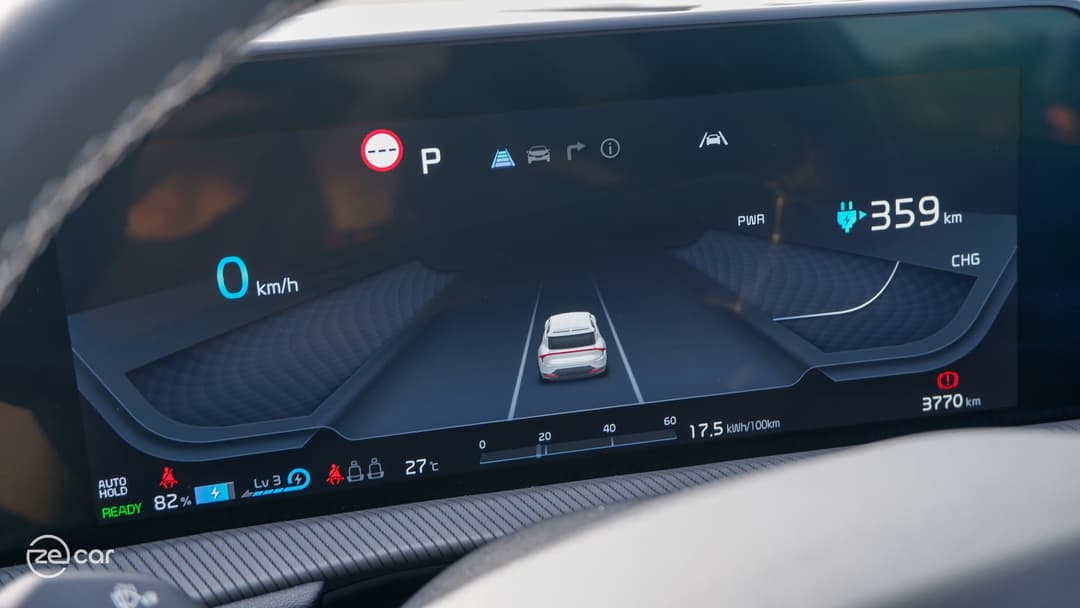
EV6 GT-Line variants also boast an augmented reality head-up display (AR HUD), which shows the speedometer, speed limit based, and safety assist alerts on the windscreen. I found it useful, but my instincts kept looking at the instrument display.
The AR element comes into full effect when using the built-in navigation by displaying three-dimensional turn direction arrows. It’s a party trick that doesn’t actually show virtual graphics in the real-space, but instead makes arrows bigger as driver’s approach closer to the turn which is underwhelming.
It also has a decent 14-speaker Meridian sound system with two modes – authentic and surround. The former pumps most of the audio through the front speakers which is most suited to podcasts, while the latter caters to music.
Though, it’s a shame that Kia’s new halo car will need to wait until its next update or facelift to feature the Kia Connect mobile app and telematics system in Australia, unlike overseas countries that have it now.
Instead, it’ll locally debut on the more affordable all-new Kia Niro EV, allowing owners to check their charge status, precondition the cabin, track its location and more remotely from a smartphone and use Internet-enabled services such as proprietary voice control, integrated syncing calendar, stolen vehicle ignition control and more.
Safety assist
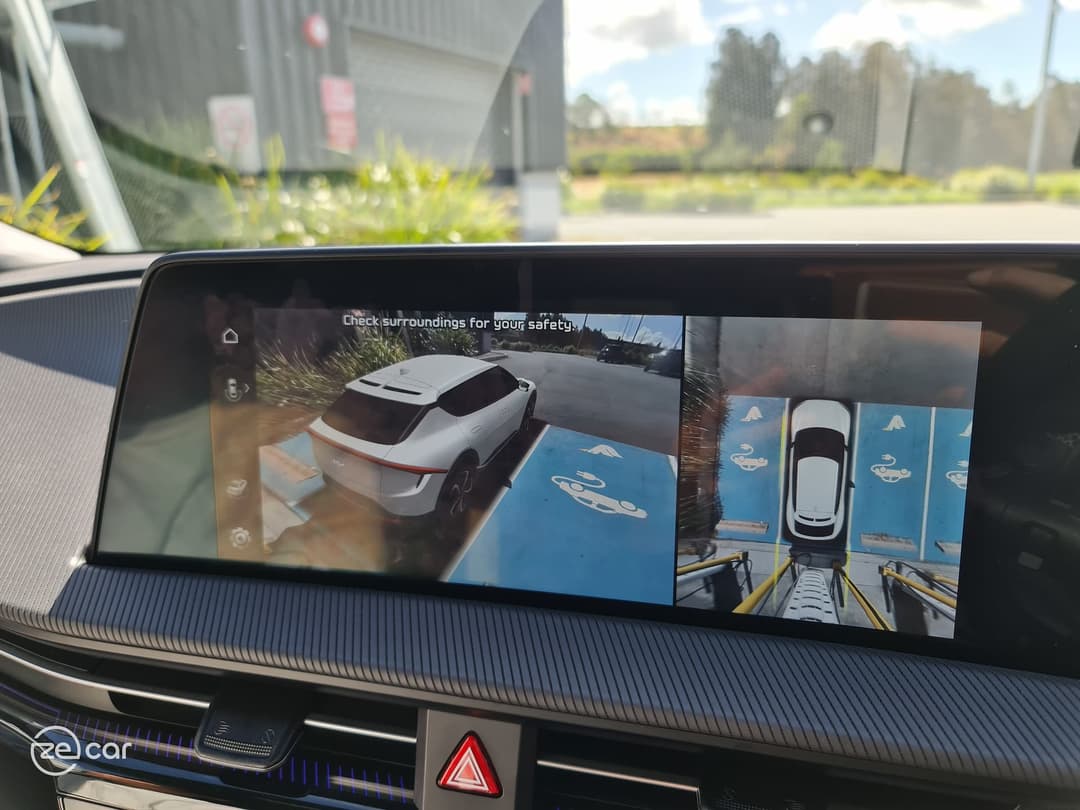
The bespoke pure-electric Kia includes the full suite of active safety technologies as standard, but only GT-Line variants have rear auto emergency braking (AEB), a 360-degree surround camera, and blind-spot view cameras.
Using radars and cameras, the adaptive cruise control worked well in maintaining a distance with the vehicle in front and keeping under the set speed limit – including in the rain.
The system pauses after the vehicle has stopped for a few seconds, requiring the driver to re-activate it via the steering wheel button or pressing the accelerator, which takes a few seconds to take off again. The lead vehicle departure system also reminds drivers if the vehicle in front has moved off.
The adaptive cruise control combines with lane centring assist to effectively steer automatically when there’s clear line markings and travelling above 60km/h. While it does offset the stress of driving, it tends to hug the middle line too much for my liking, requiring me to consistently pull against the wheel. Lane centring assist can be toggled off via a steering wheel button, though.
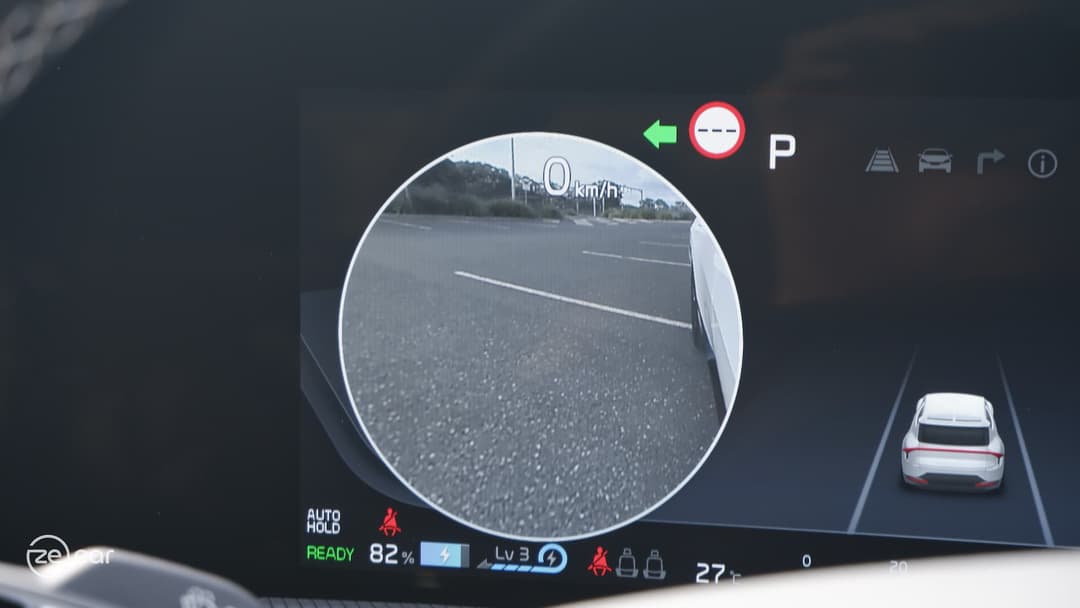
No Australian spec EV6 currently features the company’s more advanced Highway Driving Assist 2 (HDA2) system.
Meanwhile, the 360-degree camera is startlingly clear allowing a myriad of individual angles to be toggled via the touchscreen – and I’d argue it’s essential to drive the EV6’s long and wide body dimensions. While the 3D surround view looks good in photos, it wasn’t as handy compared to the top-down and front views.
The blind spot view cameras were equally crisp, shown on the driver’s instruments when the turn indicators are on, but I rarely looked at it because I’m accustomed to the obligatory shoulder and mirror checks (and adding a third step can be perplexing). It’s more of a supplement to the handy blind spot monitoring and avoidance system.
Our test unit had a bug that prevented safety systems and front and rear parking sensors from chiming, but alerts were still subtly vibrating the steering wheel.
Range and charging
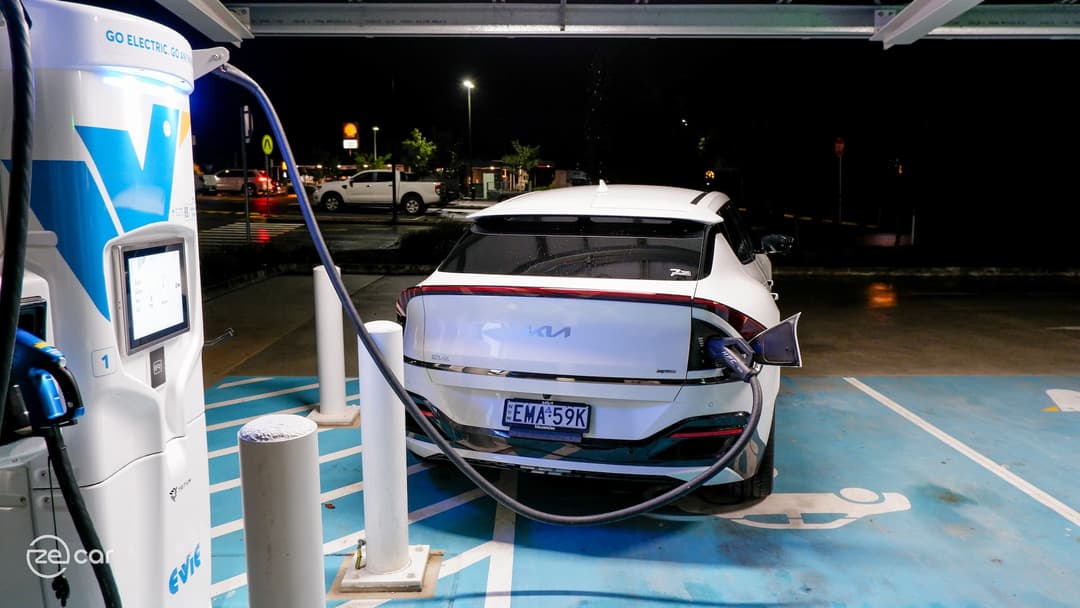
The Kia EV6’s large 77.4kWh (usable) liquid cooled lithium-ion battery is based on an 800-volt class, meaning it can charge at up to 240kW on a compatible DC ultra-rapid charger or 10.5kW on an AC wallbox.
In my testing, I managed to charge from 10 to 80 per cent in just 18 minutes on a 350kW public charger – startlingly meeting Kia’s exact claim.
Keep in mind, though, that the battery was heated up after driving through a long traffic slog and highway stretch to reach the charger. The electric crossover currently doesn’t support active battery preconditioning through the navigation system and no Australian-spec EV6 comes with an energy saving heat hump.
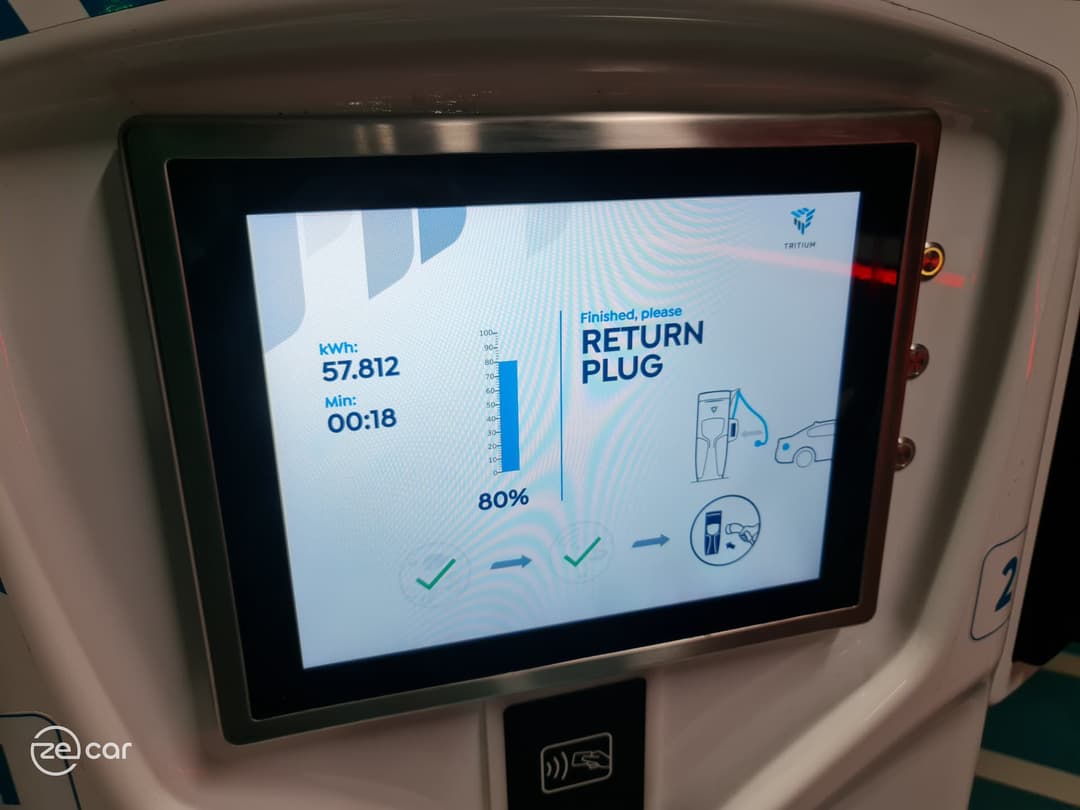
It also has four driving modes – normal, sport, eco and snow. I mostly left it on the former two and didn’t even use the most energy efficient eco mode, even with 10 per cent state of charge (SoC) remaining while reaching a charger.
This GT-Line AWD has the highest energy consumption and the least claimed range at 484km (WLTP) in the current line-up.
But in my week of combined city and highway driving with some sport mode and acceleration punches, I achieved an energy efficiency rating of 184Wh/km.
This means, the real-world range is a respectable 420km for the EV6 GT-Line AWD - 87% of the WLTP range.
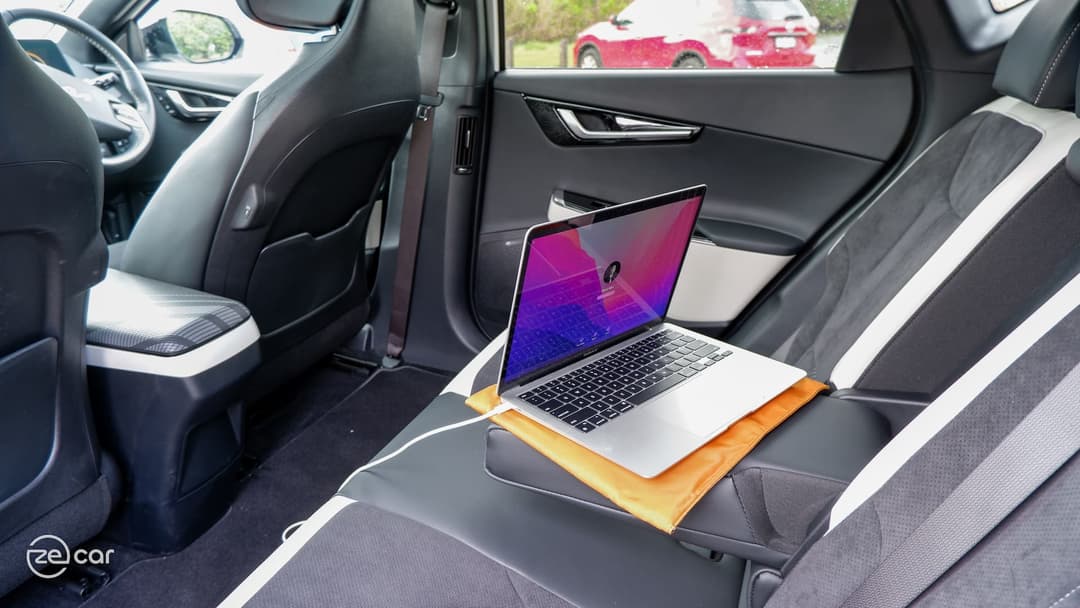
If you want more driving range, then opt for the base Air or GT-Line RWD, but I never got any 'range anxiety' despite depending on public EV charging infrastructure.
Uniquely, the EV6 has its Type2/CCS Combo charging port placed on the rear-right of the tailgate, unlike the Hyundai Ioniq 5 sibling which is on the rear-right side like a traditional fuel cap.
For public charging stations where the stall is positioned on the side of the parking space (instead of in front), the cable struggles to reach the EV6’s charging port, exacerbated by the car’s long dimensions getting in the way.
The pure-electric crossover is also capable of vehicle-to-load (V2L), which allows it to essentially act as a large battery bank to power any device using a standard domestic socket. Kia supplies an adapter to use outside the vehicle and there’s a plug inside underneath the rear row. I didn’t find it as useful in my week of testing, but if you want to charge your laptop faster or power a coffee machine while car camping, it can be handy as it outputs up to 3.6kW (3600 watts).
Driving
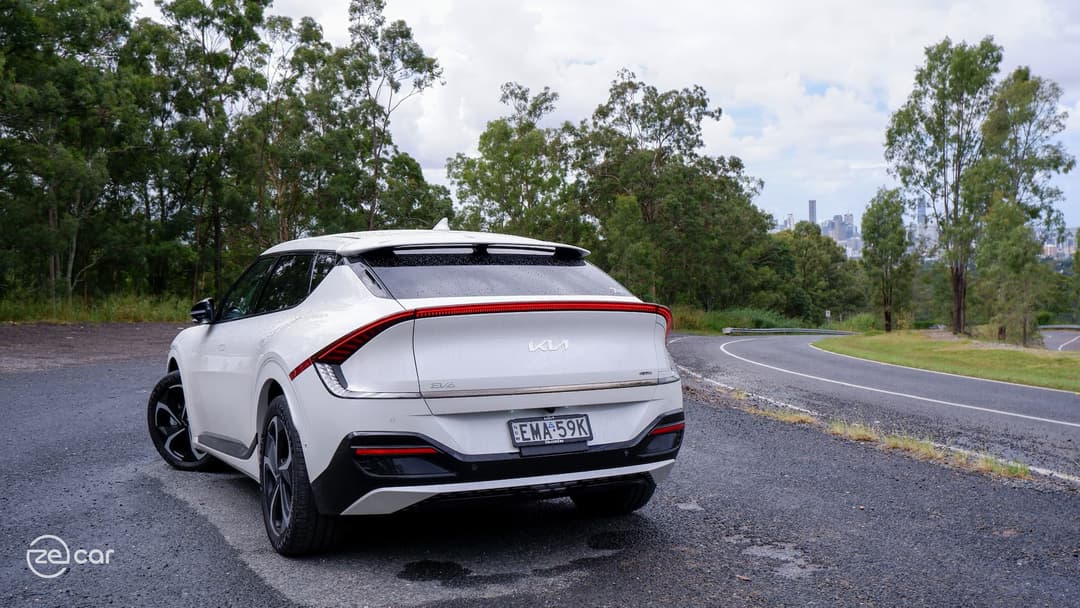
The current GT-Line AWD range-topper features dual electric motors outputting a combined 239kW of power and 605Nm of torque. Kia says it can sprint from 0-100km/h in just 5.2 seconds.
I found the acceleration torque delivery quite linear, rather than giving a heart-sinking feeling typical of Teslas. It was also confidence-inspiring that it could merge, overtake and enter gaps quickly thanks to the instant electric torque.
Uniquely, the EV6 has been subject to an Australian ride and handling tune using shock absorbing technology from ZF Sachs.
Despite riding on large 20-inch 255/45 Continental wheels, it has a smooth ride on coarse roads, deals with speed bumps and potholes well, and the cabin stays fairly quiet.
It lives up to its sporty design with sharp, stable steering without much body roll due to the low centre of gravity from the battery pack underneath. It certainly doesn't feel like you're moving a heavy 2540kg car on the road (477kg of which is the battery pack).
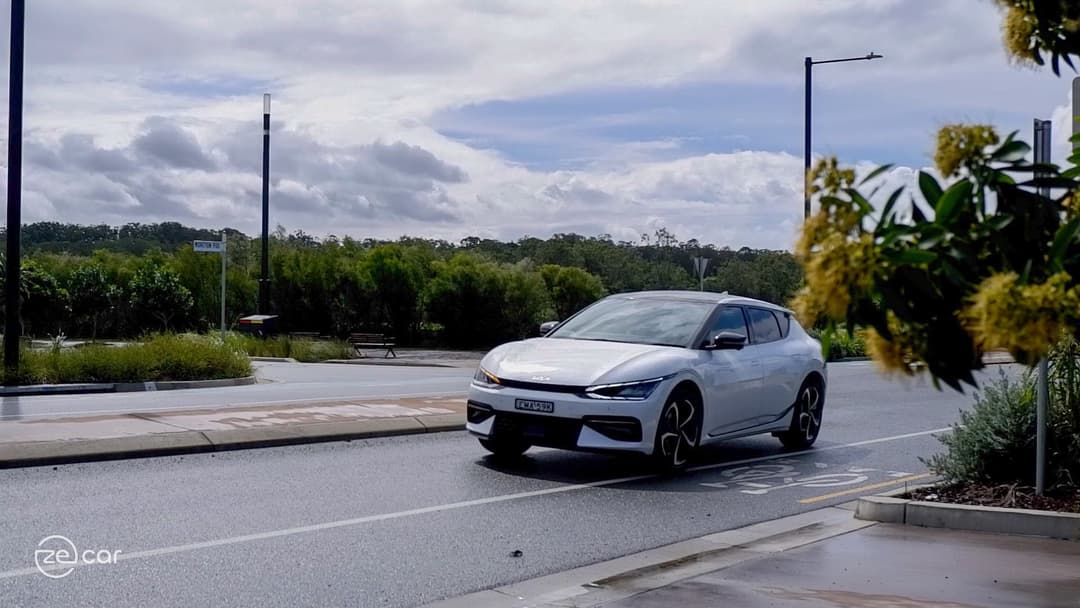
Though, what I can feel is its 1890mm wide, 4695mm long body and 11.6-metre turning circle. It can be cumbersome in any car park, with the EV6 often just fitting within the lines of parking spaces (including EV public chargers).
Thankfully, there's a 360-degree camera system that clearly shows what's around and in front. This is a key reason to go for the GT-Lines.
The EV6 offers decent all-round visibility, but the swooping rear makes the back window a bit narrower. Although it doesn’t feature a rear window wiper, the coupe-like back and air ducts cut on the top spoiler does clear rain droplets away in my gloomy week of testing.
The South Korean automaker also offers a range of regenerative braking settings, including off, levels one to three, auto one to three, and max i-Pedal mode for one pedal driving. Drivers can also hold the left paddle for max regen in all other modes to come to a halt.
As the first pure-electric car I've driven in my life, I started on level two and quickly adjusted to i-Pedal that enables the EV6 to be more efficient and safer to drive.
However, I found that, in its current implementation, it's not bona fide one pedal driving.
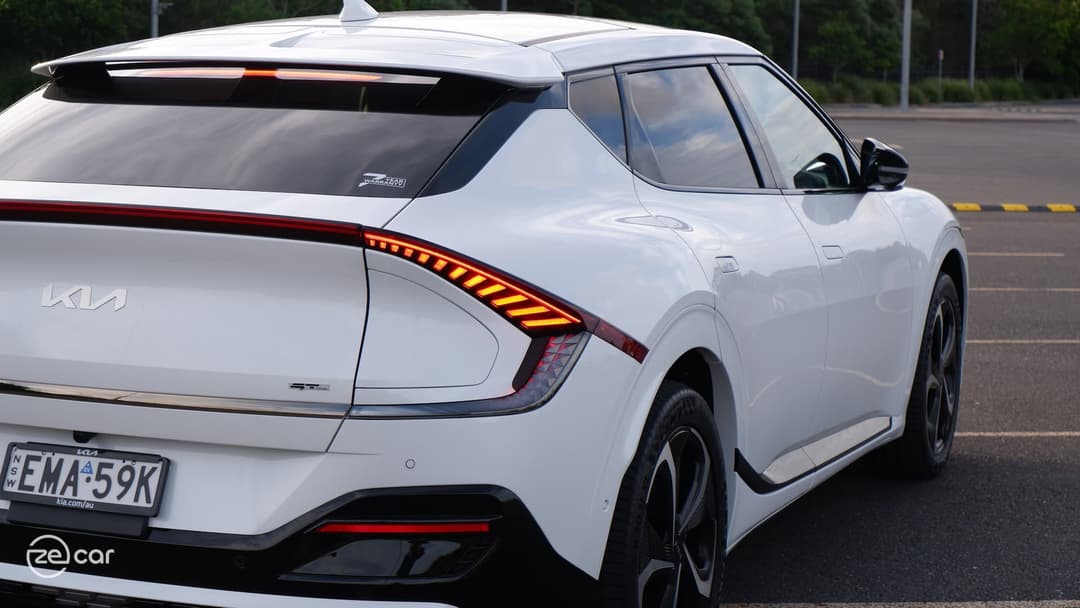
When regening in i-Pedal, it effectively slows down the electric crossover to a halt. Yet, the threshold to turn on the rear brake lights is a little conservative for my preference and requires the driver to really slow down more aggressively to activate the brake lamps.
Critically, the system doesn't automatically activate auto-hold when completely stopped after i-Pedal regenerative braking, meaning the brake lights don't stay on while stationary. Instead, the driver still needs to press the brake pedal to enable auto hold.
This is disconcerting as I was driving for a few days without knowing that its brake lights weren’t turning on when the EV6 came to a standstill using the ‘one pedal driving’ mode.
Whenever the EV6 is turned on or when the drive direction selector ‘gear’ is switched, the regen system resets to level three every time which can be annoying as I sometimes forget it’s no longer on i-Pedal until I realise the car is coasting under 20km/h rather than coming to a complete stop.
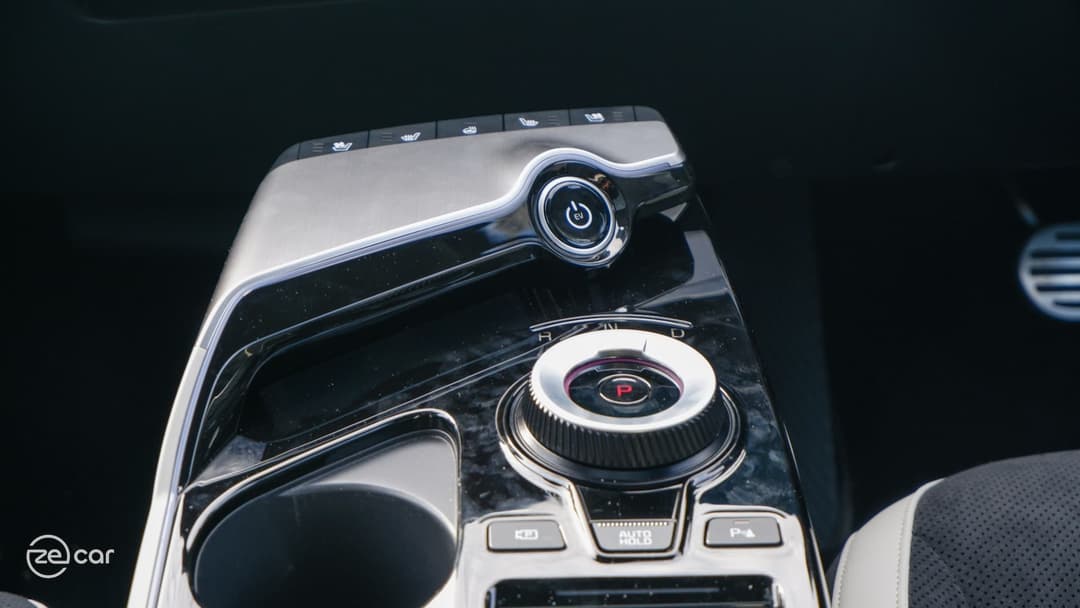
Moreover, I didn't find the adaptive automatic regen function to be as reliable. Even when set on the strongest level three setting, it kept rolling when there was a vehicle in front and activated the AEB collision warning instead. That's despite the instrument cluster indicating its radar sensors did detect the vehicle in front.
GT-Line models also boast three different Active Sound Designs, which are artificial futuristic sounds pumped through the speakers. But, due to a bug with our test unit, it wasn't audible even when activated in the settings.
The added front electric motor of the AWD did offer up some pleasant natural motor whirring sounds, though.
Verdict
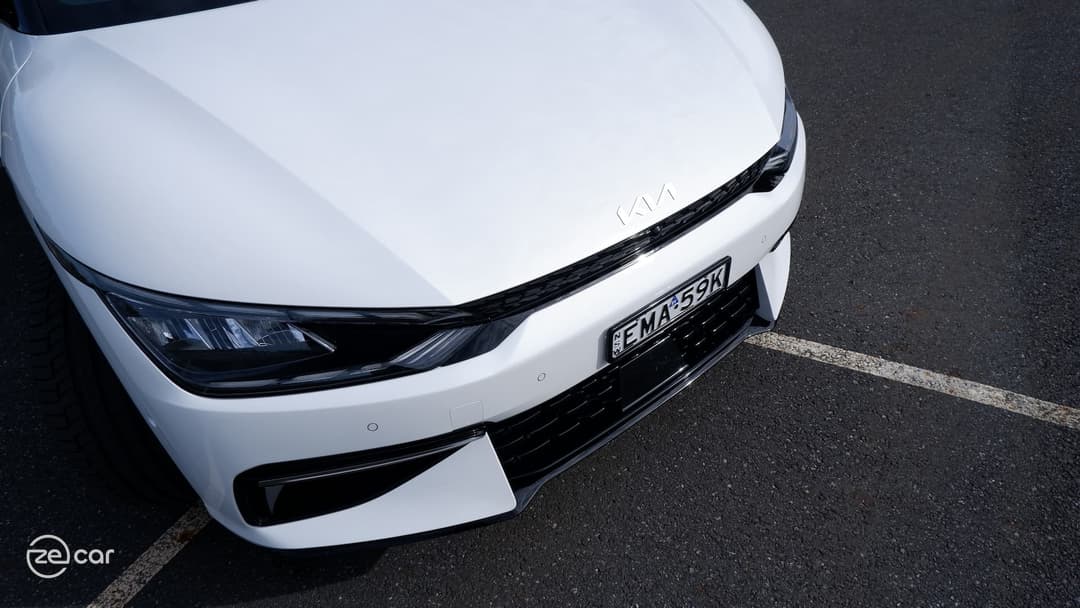
The Kia EV6 GT-Line AWD is a compelling bespoke electric car that looks attractive, capable of ultra-rapid charging, and drives well on our often sub-par Australian roads.
Kia should especially look at enabling auto brake hold by itself when the vehicle comes to a complete stop using i-Pedal regenerative braking, and there are still gripes around the EV6's boot practicality, smartphone mirroring and material quality for its price tag.
This AWD variant is particularly punchy and we can't wait to find out how Kia will elevate it further with the EV6 GT landing in late 2022 or early 2023.
But, at $8000 more expensive than the GT-Line RWD – which only misses out on the extra power, shaves off the 0-100km/h time by 2.1 seconds, and omits a sunroof – it seems the RWD is better value and the more sensible choice.
Despite this, the EV6 GT-Line AWD is also the most popular variant in the line-up, accounting for more than 50 per cent of pre-orders.
If you want the confidence of AWD, the Hyundai Ioniq 5 AWD is notably cheaper at $75,900 before on-road costs with similar on-paper figures, though we're curious to test it out and see how its retro-styled sibling compares.
The EV6 GT-Line AWD also faces fierce competition from similarly priced luxury marques such as the optioned-up Polestar 2 Long Range Dual Motor, Volvo C40 Recharge Twin and Mercedes-Benz EQA 250. While we're yet to test these battery-electric crossovers – which are all based on internal combustion engine underpinnings – the EV6 presents a compelling unique package if you look past the (new) Kia logo.
As Kia’s new flagship vehicle, the EV6 demonstrates electric cars are not the future; they’re already here.
But, the biggest gripe is the fact that Australia is simply receiving too little stock allocation for the Kia EV6. While you can try being on the long one- to two-year EV6 waiting list, don’t discount other EVs in the interim (if you can manage to grab one earlier in the current crisis).
EV6 FAQs
Datawrappers by Danny Thai
Photographs by Henry Man
About the author
Stay up to date with the latest EV news
- Get the latest news and update
- New EV model releases
- Get money savings-deal




